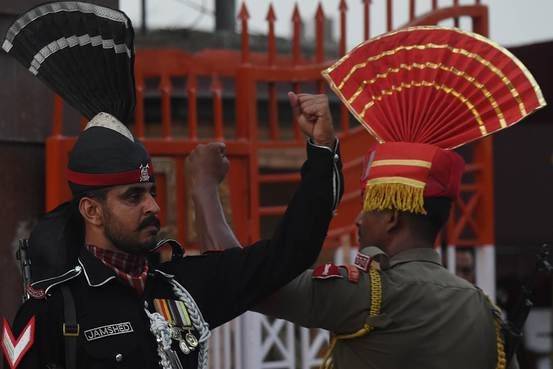The 'Wall Street Journal' article that reports $4.9 billion transferred from Pakistan to India
Shares

ISLAMABAD - People in Pakistan sent almost $5 billion to India last year, according to World Bank estimates, making it one of the largest sources of remittances to the world’s second-most-populous country.
The number is astonishingly high considering direct remittances between the rival countries are highly restricted.
What makes the estimate more incredible is that the World Bank says it happens regularly and the amount sent to India is going up.
Those living in Pakistan sent $4.90 billion to India last year, $4.79 billion the previous year and $4.67 billion the year before that <link>, according to the World Bank.
Indian globe-trotters aren’t piling into Pakistan to work on code or construction, in fact only a few thousand Indians go to work in Pakistan each year. The Reserve Bank of India estimates that only around $1 million was remitted to India from Pakistan through official channels in the year ended March 2015.
So what is going on?
The answer is part history and part mystery, says Dilip Ratha, a lead economist at the World Bank and a manager of its migration and remittances development prospects group, which helped come up with the numbers <link>.
The origins of all the money buzzing around the globe are hard to trace. Remittances may go through more than one country before reaching their destination and when money is transferred, it is recorded as if it was sent from the country where the intermediary bank is headquartered. So, for example, a transfer by Citigroup Inc. customer from Milan to Mumbai would be recorded as dollars moving from the U.S.
To try to trace the source of the $72 billion in remittances to India last year <link>, the World Bank can only make an educated guess.
“It’s an inexact science,” Mr. Ratha said. “The bilateral remittances are basically made up according to assumptions.”
The World Bank has built a model that uses the population and origins of immigrants, average incomes and cost of living in each country to estimate how remittances flow.
Pakistan is home to more than 1.4 million people who were born in India. However, these immigrants are not your traditional non-resident Indians. They are a remnant of partition when colonial India was split and millions of people moved as they picked a country or were kicked out and displaced by violence. ADVERTISEMENT
The World Bank attributes a large slice of India’s annual remittance income to Pakistan because there is such a large group of India-born citizens there. The money also flows the other way, according to the bank’s model, as there are around 1.1 million Pakistan-born people living in India. The World Bank estimates Pakistan received remittances of more than $2 billion from India.
Some readers of The Wall Street Journal who first saw these numbers in a story titled “The Difference Between Indian and Chinese Migrants,” <link> were shocked, skeptical and scared. The amounts had to be a mistake, some said in comments, or proof that money is being sent to finance terrorism or organized crime in India <link> .
Mr. Ratha still stands by the bank’s best guess and says the origin of the cash is much less sinister.
The billions of dollars flying back and forth between the two countries are from the same place as the rest of the world’s remittances: family and friends supporting each other across borders.
There are literally millions of family connections between the two countries and millions of reasons a person in Pakistan might find a way to get money to relatives in India. The money could be sent for a brother in need, a cousin’s wedding, an uncle’s funeral or even to help educate a niece.
Despite the animosity between the two countries, as well as the rules, regulations and restrictions, family and finance finds a way.
Sometimes that means using informal avenues like the hawala money transfer system <link>or arranging for the money to be sent via a different country. Sometimes it means an envelope of cash carried by a friend traveling to India.
“These are two big economies right next to each other. The money must be flowing,” Mr. Ratha said. “That number we put out could even be an underestimation.”
Source: Wall Street Journal
By: Eric Bellman
